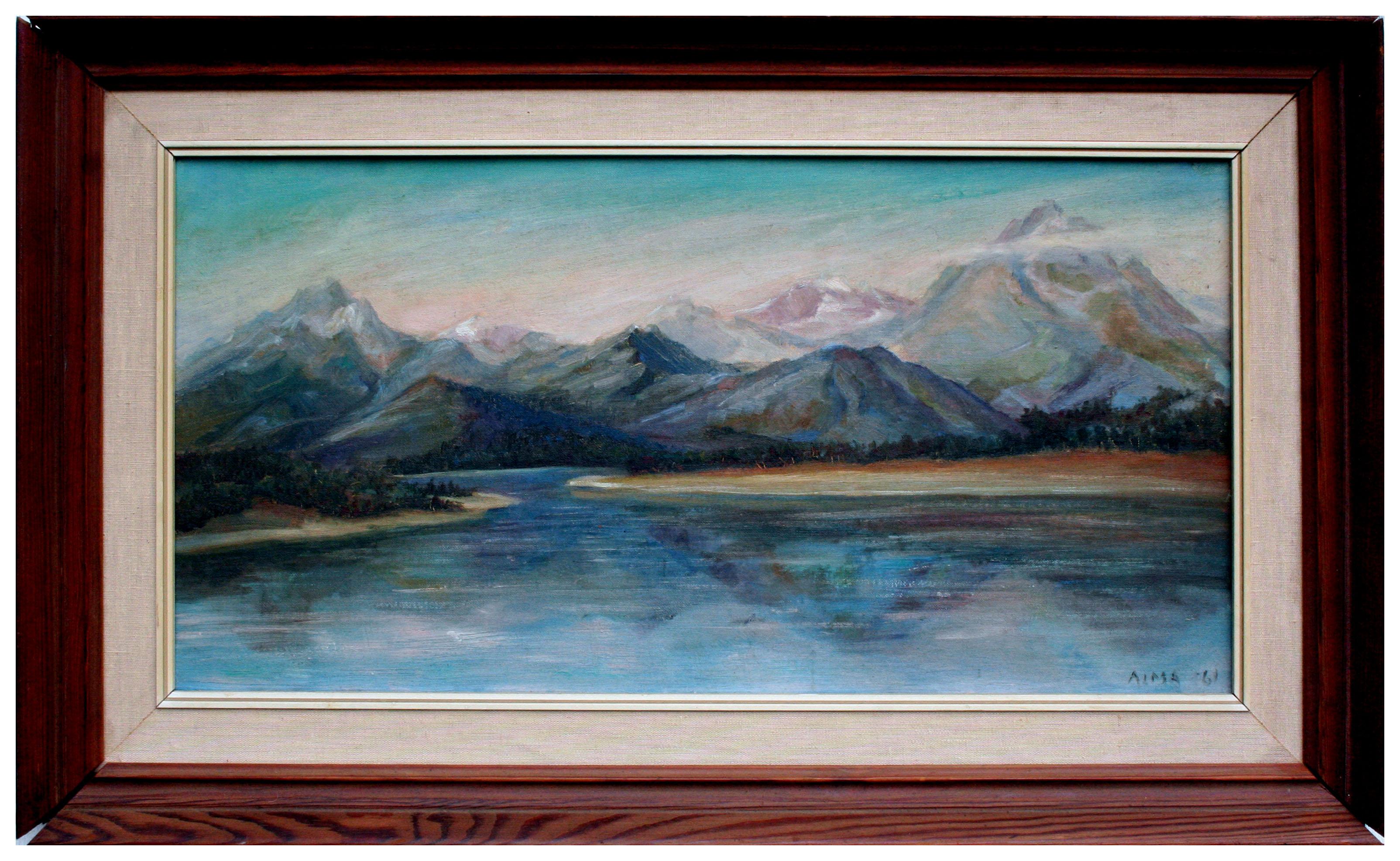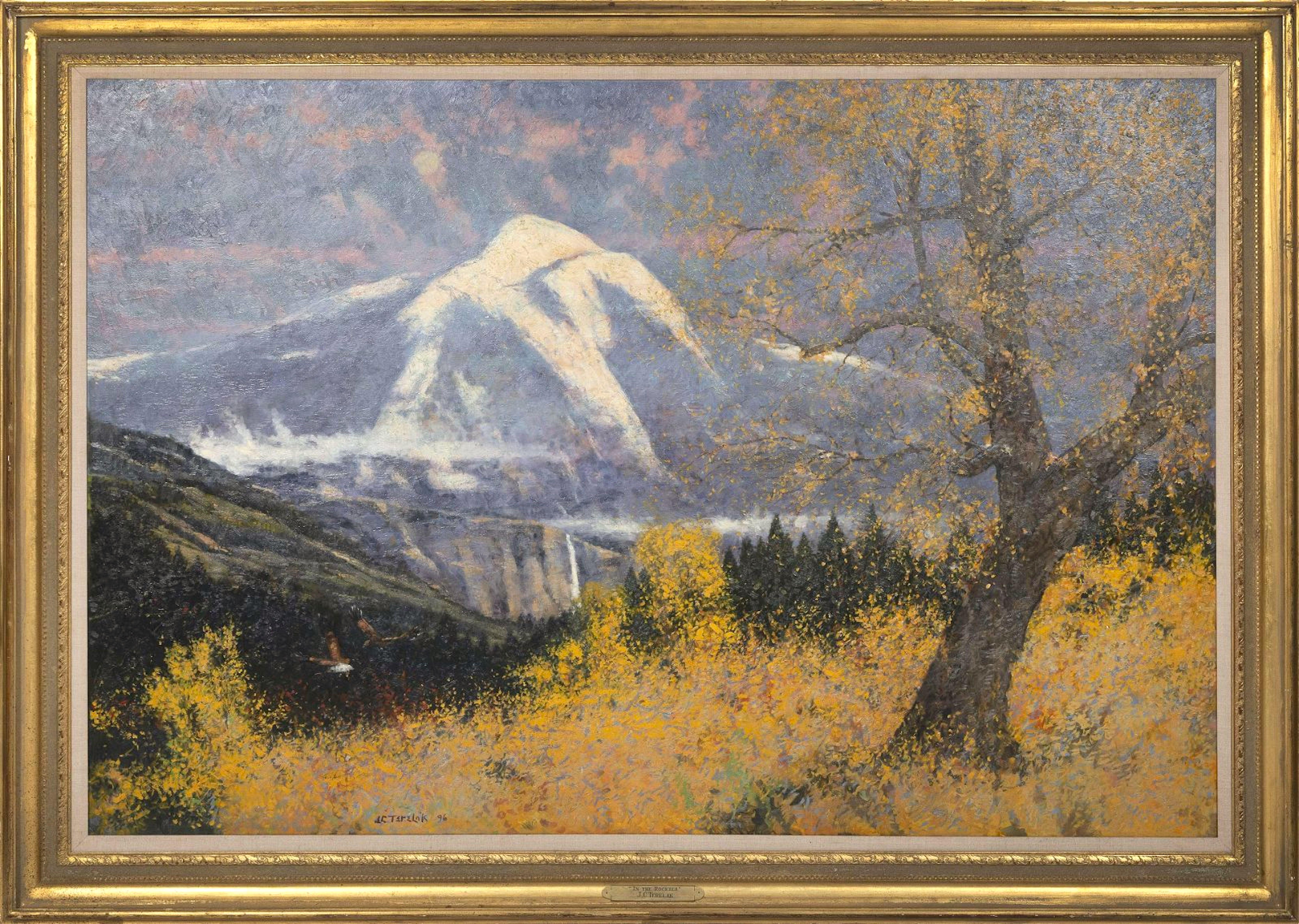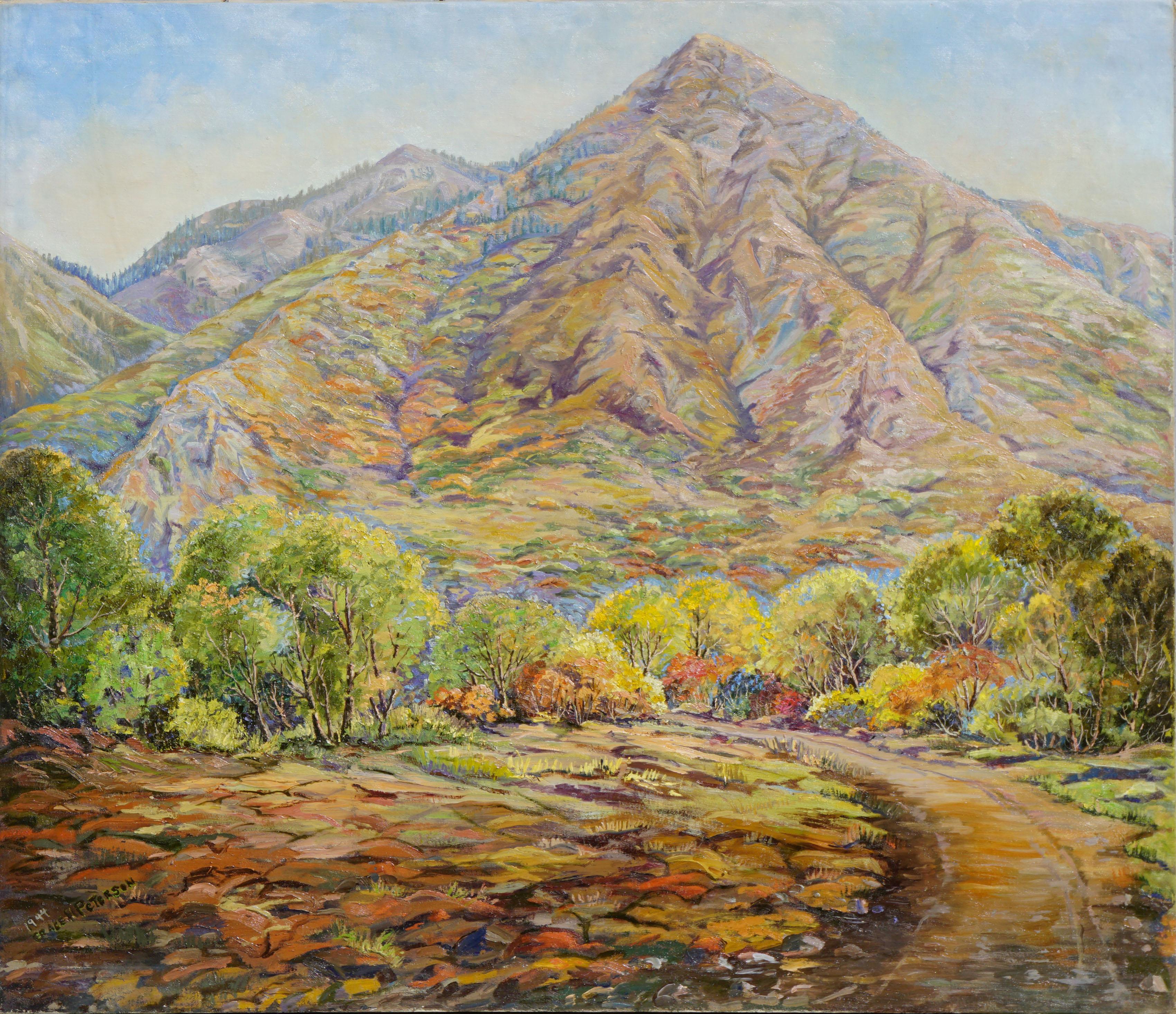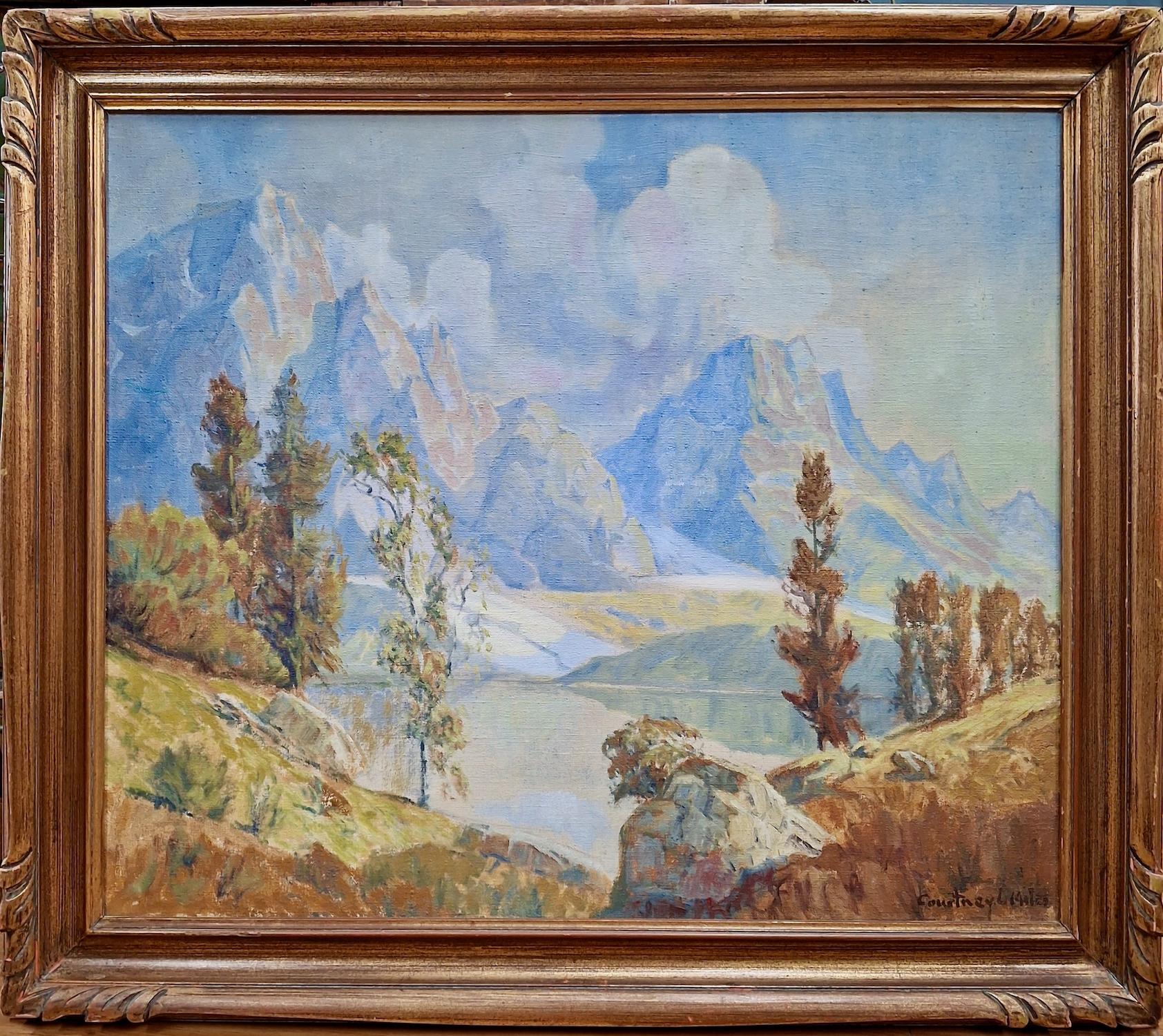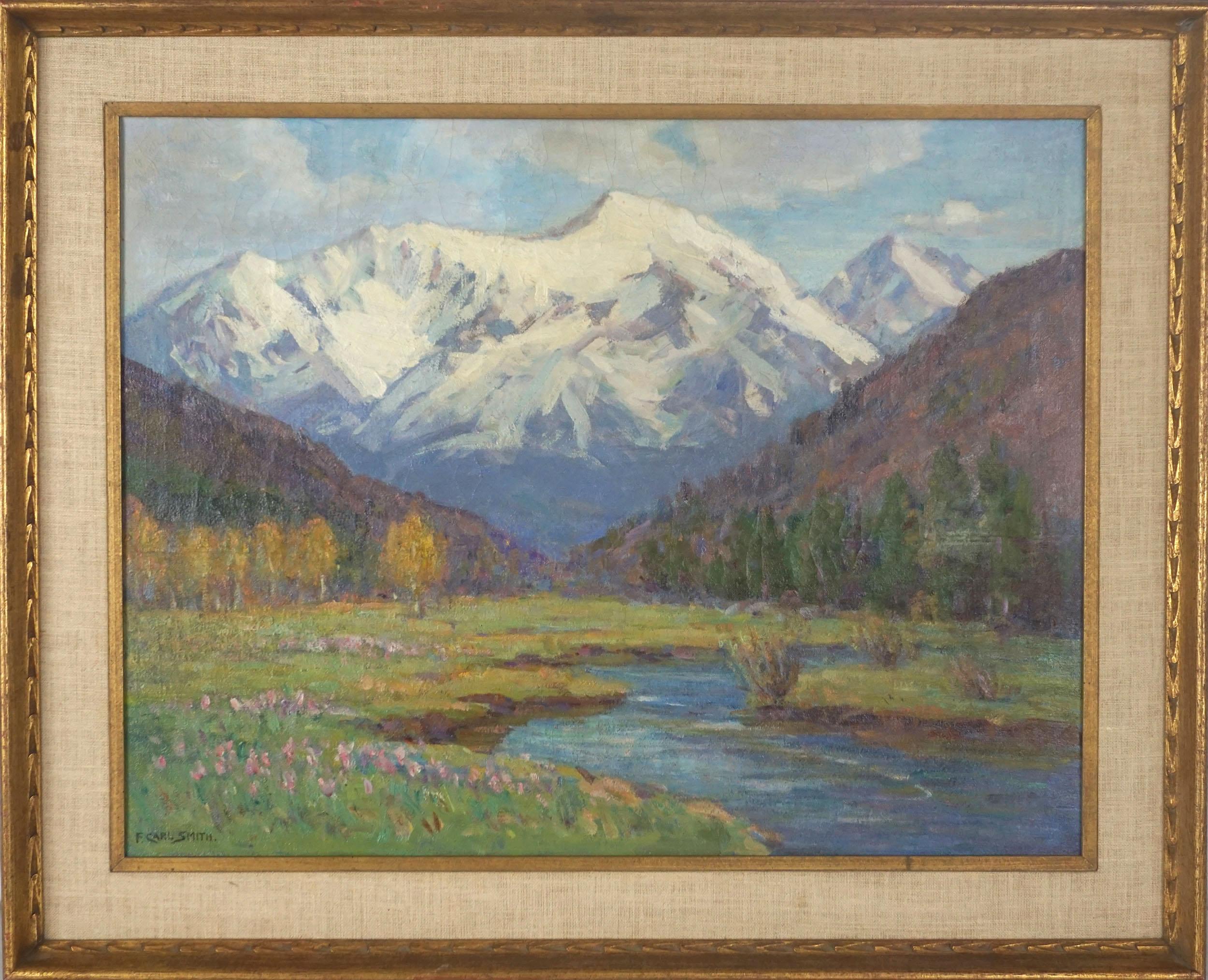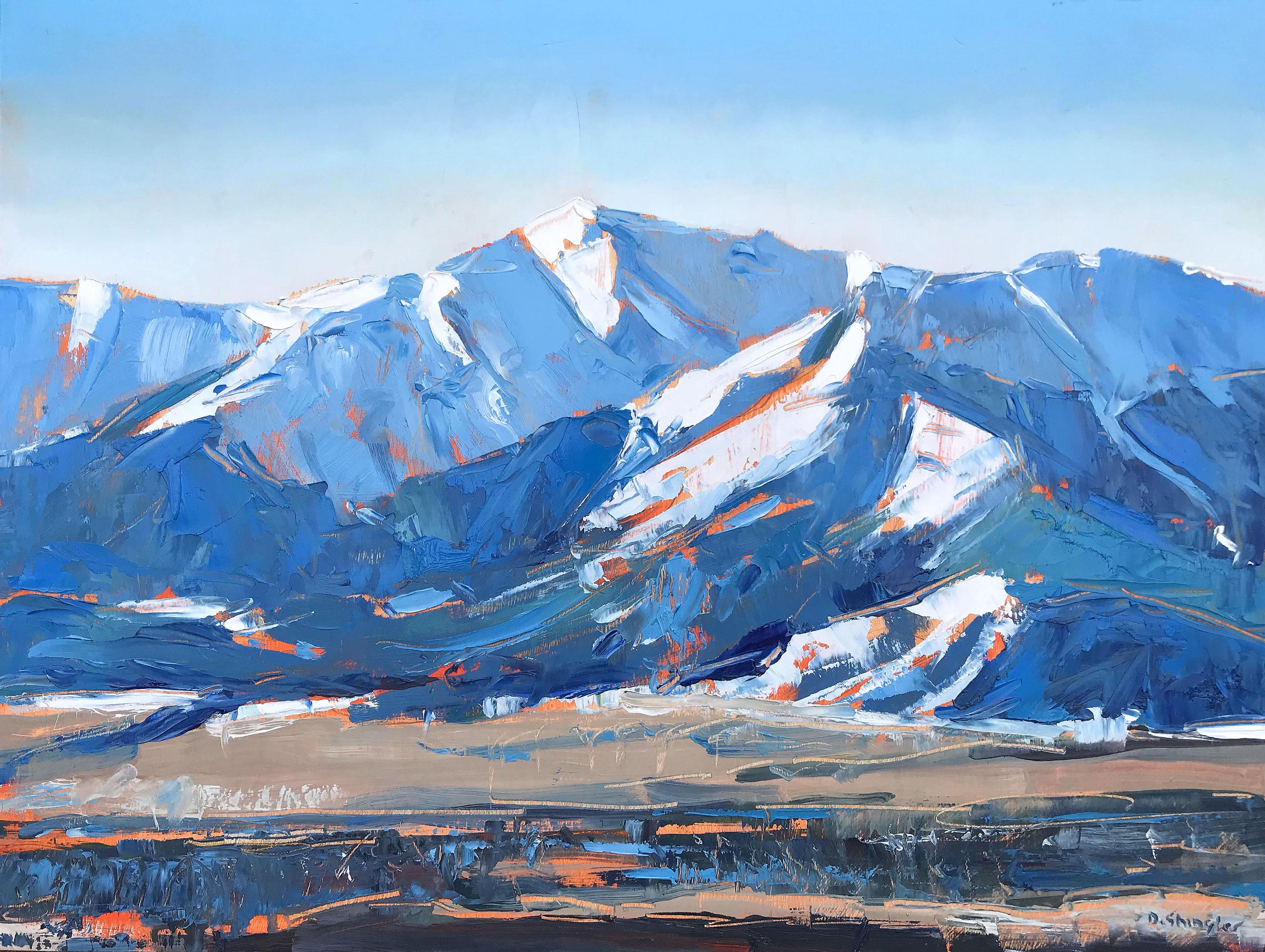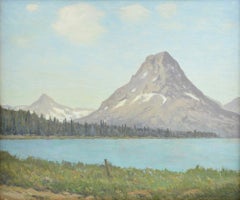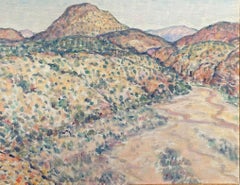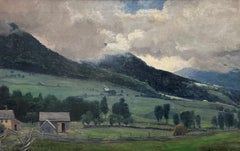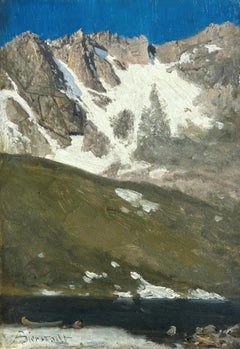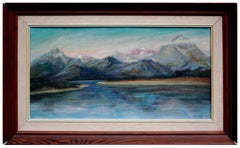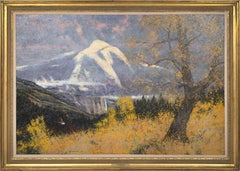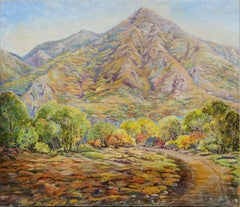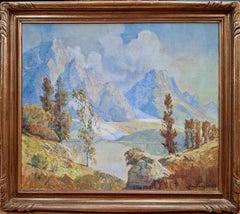Items Similar to "Wasatch Range, Utah" James Taylor Harwood, Vast American Western Landscape
Want more images or videos?
Request additional images or videos from the seller
1 of 7
James Taylor Harwood"Wasatch Range, Utah" James Taylor Harwood, Vast American Western Landscapecirca 1910s
circa 1910s
$40,000
£30,049.12
€34,651.52
CA$55,505.22
A$61,678.54
CHF 32,320.21
MX$756,377.37
NOK 412,225.45
SEK 387,806.57
DKK 258,624.22
Shipping
Retrieving quote...The 1stDibs Promise:
Authenticity Guarantee,
Money-Back Guarantee,
24-Hour Cancellation
About the Item
James Taylor Harwood
Wasatch Range, Utah
Inscribed "Wasatch Range, Utah" on the stretcher
Oil on canvas
16 x 31 inches
Provenance
Blanche M. Swan
Private Collection
Bob & Sandra Inwright, by descent
James Taylor Harwood was born on April 8, 1860, in Lehi, Utah, into a family that embraced the arts. During his childhood, he engaged in sketching and later pursued art studies with local Utah artists George M. Ottinger and Danquart A. Weggeland. In 1888, encouraged by them, Harwood became one of the pioneering group of artists from Utah to travel to France for art studies in Paris.
Prior to his journey to Paris, Harwood fell for his fellow art student, Harriet Richards; they mere married in Paris in 1891. In 1892, he achieved the distinction of being the first artist from Utah to exhibit a work at the esteemed Paris Salon. Over the subsequent years, the Harwoods alternated between their studio in Salt Lake City and frequent trips to Paris for artistic rejuvenation. After returning to the U. S. in 1904, Harwood commenced teaching art at local high schools in Salt Lake City while continuing his painting in his studio.
Between 1907 and 1910, Harwood's artistic approach evolved from precise Academic Realism to embrace tonalism and eventually, Impressionism. In April 1921, he experienced the loss of his cherished Harriet. Two years later, he took on the role of head of the art department at the University of Utah, where he established an art curriculum that emphasized craftsmanship, a principle that persisted long after his departure.
In December 1927, Harwood met and fell in love with Ione Godwin, a young literature student. Their romance raised eyebrows due to a significant age gap of 47 years, yet they wed on June 1, 1929. Ione inspired Harwood, igniting a vigorous period of artistic output.
At the age of 70, Harwood stepped down from his position at the University of Utah to dedicate more time to his painting, taking his family back to Paris, where he created artworks, made prints, and showcased his pieces in exhibitions. Throughout the next nine years, his art became well-known for its nearly pointillist technique. He made regular trips to Europe until 1939, when the impending war compelled the Harwoods to remain in Salt Lake City, where he passed away in October 1940.
Harwood, though an exacting draftsman, possessed a warm demeanor and was celebrated as a “patient, loving teacher. ” He also had talent in printmaking and watercolor painting.
- Creator:James Taylor Harwood (1860-1940, American)
- Creation Year:circa 1910s
- Dimensions:Height: 21 in (53.34 cm)Width: 36 in (91.44 cm)
- More Editions & Sizes:Unique WorkPrice: $40,000
- Medium:
- Movement & Style:
- Period:
- Condition:
- Gallery Location:New York, NY
- Reference Number:1stDibs: LU1841216650082
About the Seller
5.0
Platinum Seller
Premium sellers with a 4.7+ rating and 24-hour response times
Established in 2022
1stDibs seller since 2022
114 sales on 1stDibs
Typical response time: <1 hour
- ShippingRetrieving quote...Shipping from: New York, NY
- Return Policy
Authenticity Guarantee
In the unlikely event there’s an issue with an item’s authenticity, contact us within 1 year for a full refund. DetailsMoney-Back Guarantee
If your item is not as described, is damaged in transit, or does not arrive, contact us within 7 days for a full refund. Details24-Hour Cancellation
You have a 24-hour grace period in which to reconsider your purchase, with no questions asked.Vetted Professional Sellers
Our world-class sellers must adhere to strict standards for service and quality, maintaining the integrity of our listings.Price-Match Guarantee
If you find that a seller listed the same item for a lower price elsewhere, we’ll match it.Trusted Global Delivery
Our best-in-class carrier network provides specialized shipping options worldwide, including custom delivery.More From This Seller
View All"Mount Rockwell, Glacier National Park, Montana, " Mountain Lake Landscape View
By Charles Warren Eaton
Located in New York, NY
Charles Warren Eaton (1857 – 1937)
The Shadow of Mount Rockwell, Glacier National Park, Montana, 1921
Oil on canvas
20 x 24 inches
Signed lower right: CHAS WARREN EATON.
Provenance:
The artist
The Macbeth Gallery, New York
Private Collection
Sotheby's New York, American Art, April 14, 1989
ConocoPhillips, Houston
Simpson Galleries, Houston, Fine Art & Antiques, May 18, 2019, Lot 447
Exhibited:
New York, The Macbeth Gallery, Paintings of Glacier National Park by Charles Warren Eaton, December 13, 1921 - January 2, 1922, no. 2.
Literature:
"Two Exhibitions at Macbeth's," American Art News, New York, Vol. XX, No. 10, December 17, 1921.
A contemporary critic wrote that the paintings of Charles Warren Eaton appeal to “the dreamers who find in them the undiscovered scenes in which their fancy long has dwelt.” Eaton’s contemplative landscapes exude a spiritual quality that moves the observer into a similar frame of mind. He loved to depict the ethereal light of dawn and dusk in late autumn or winter, usually without any reference to human or animal figures or buildings. These Tonalist paintings, with their subdued palette and relatively intimate scale, marked a definite break with the fading popularity of the panoramic and romantic views of the Hudson River School painters.
Charles Warren Eaton was born in Albany, New York to a family of limited means. He began painting while working in a dry-goods store. At age 22, he enrolled at the National Academy of Design in New York City and then studied figure painting at the Art Students League. By 1886, he was successful enough to quit his day job and make a living as a landscape painter. That year, he traveled to Europe with fellow Tonalist painters Leonard Ochtman and Ben Foster. In France, Eaton visited popular artist’s spots such as Paris, Fontainebleau and Grez-sur-Loing, and fell in love with the loose brushwork and moody style of French Barbizon painting.
Returning to the United States, Eaton fell under the spell of George Inness, the foremost exponent of Barbizon style in the United States. In 1888, Eaton settled near Inness in Bloomfield, New Jersey, where Eaton lived until his death in 1937. In this period, he painted shadowy and ambiguous landscapes inspired by rural scenery in the northeastern United States. His signature theme was a cropped view of the branches, trunks, and foliage of a pine grove silhouetted against a delicately illuminated sunset or moonlit sky. He painted this vision so often between 1900 and 1910 that he picked up the sobriquet ‘‘The Pine Tree Painter.”
After 1910, Eaton responded to the popularity of Impressionism by using brighter colors and painting sunlit daytime scenes. In 1921, he was hired to paint Glacier Lake, in Glacier National Park by the Great Northern Railroad Company as part of their ‘See America First’ campaign. He produced more than 20 paintings, among the artist's last works, that now poignantly remind viewers of the vast disappearing glaciers. Eaton tended to approach this mountain scenery from an oblique vantage point; he liked to capture small episodes, showing mountaintops nearly obscured by dramatically attenuated screens of fir trees.
Eaton, like many Tonalist artists of his generation such as Henry Ward Ranger, John Francis Murphy, and Charles Melville Dewey...
Category
1920s Tonalist Landscape Paintings
Materials
Canvas, Paint, Oil
"View of Arizona Desert near Wickenberg" Will Foote, Impressionist Western Scene
Located in New York, NY
Will Foote
View of Arizona Desert near Wickenberg, circa 1927
Signed lower center; titled and dated on the reverse
Oil on artist's board
12 x 16 inches
Foote was born on June 29, 1874 in Grand Rapids, Michigan, and died on January 27, 1965, in Sarasota, Florida. He was in Old Lyme, 1901-65; and in Cos Cob, 1903.
Will Howe Foote was one of the earliest artists at Old Lyme and one who adopted the town as home. He first went there the summer of 1901 with his uncle, William H. Howe, a painter of cattle, who had been told about the beauties of the countryside by Henry Ward Ranger. Foote had himself heard of Old Lyme when he had met Clark Voorhees in France. He and his uncle were both from Grand Rapids, Michigan, where Foote's father was an executive in the furniture industry that made the city famous. Encouraged to be an artist by his father, he began his professional training at the Art Institute of Chicago in 1894. He became friends there with a fellow Michigan student, Frederick Frieseke, who would study with him again at the Art Students League in New York, where Foote worked in 1895-96 under H. Siddons Mowbray and Kenyon Cox.
In 1897 he and Frieseke went to the Academic Julian in Paris, where Foote studied under Jean-Paul Laurens and Benjamin Constant. He was at Julian's until 1900, except for an Italian trip, summers at Laren, Holland, or Etaples, France, and a short period at Whistler's school in Paris. He exhibited twice at the Old Salon, and when he returned to the United States in 1900, he had a one-man exhibition in his hometown.
Will Howe Foote's paintings were well received on his return from abroad. He exhibited frequently at the National Academy of Design and became an associate member in 1910. His awards included a bronze medal at the St. Louis Exposition in 1904 and a silver medal at the Panama-Pacific Exposition in San Francisco in 1915.
Once he visited Old Lyme, Foote returned every summer. In 1902 he was hired as assistant to Frank DuMond at the Lyme Summer School of Art, which was sponsored by the Art Students League of New York. Sometime in 1903 he also taught a session in Cos Cob. After 1906, when the League moved its Lyme classes to Woodstock, New York, Foote continued in Old Lyme as a private instructor.
In 1907 he was married to Helen Kirtland Freeman, whom he had met a year or two earlier when she had come to the Lyme art colony as a student of Henry Rankin Poore. Fellow artist William Chadwick was best man at the wedding. The Footes began building a house on Sill Lane in Old Lyme and upon its completion in 1909 spent every spring, summer and fall there, where Foote devoted full time to painting. The Gregory Smiths, old friends from Grand Rapids, arrived in Old Lyme in 1910 and became neighbors. Foote's early works in Connecticut, such as A Summer's Night reflect the artist's interest in soft, atmospheric scenes dominated by a single, overriding tone. The arrival of Childe Hassam and Walter Griffin...
Category
1920s American Impressionist Figurative Paintings
Materials
Oil, Board
"Hillside Landscape" Edwin Child, Farmland, Vast Rural Mountainous Landscape
Located in New York, NY
Edwin Child
Hillside Landscape, 1896
Signed and dated lower right
Oil on canvas
18 x 28 inches
Edwin Burrage Child was a prominent New England portraitis...
Category
1890s American Impressionist Figurative Paintings
Materials
Canvas, Oil
"Mt. Rosalie, Colorado" Albert Bierstadt, Western American Mountain Landscape
By Albert Bierstadt, 1830-1902
Located in New York, NY
Albert Bierstadt
Mt. Rosalie, Colorado, circa 1863
Signed lower left: ABierstadt; inscribed on verso: Mt. Rosalie / Colorado
Oil on paper
13 1/4 x 9 1/2 inches
Provenance
Private Co...
Category
1860s Hudson River School Figurative Paintings
Materials
Paper, Oil
"California Mountains, " Orrin White, Impressionism, Southwest Desert Landscape
By Orrin A. White
Located in New York, NY
Orrin White
California Mountain Landscape
Signed lower right
Oil on board
8 x 10 inches
A nationally known landscape painter, who spent the prime of his career in California, Orrin White was born in Hanover, Illinois. He was artistically inclined at an early age but did not pursue an art career until he was in his thirties. After receiving a Bachelor of Arts degree from Notre Dame University...
Category
Early 20th Century Impressionist Landscape Paintings
Materials
Oil, Board
$2,400 Sale Price
20% Off
"Road to Provincetown, " Henry MacGinnis, Massachusetts Landscape
By Henry Ryan MacGinnis
Located in New York, NY
Henry Ryan MacGinnis (1875 - 1962)
Road to Provincetown, 1924
Oil on canvas
25 x 30 inches
Signed lower right; titled and dated on the stretcher
Housed in a Stanford White Newcomb-Macklin frame.
Exhibited:
Trenton, New Jersey, School of Industrial Arts Provincetown by Professor MacGinnis, 1924.
Henry Ryan MacGinnis, 1875-1962, was born in Indiana and began his art studies under the eminent Hoosier artists T.C. Steele, J.O. Adams and William Forsyth. One of his earliest exhibitions was in 1896, when he showed his work with other notable Hoosier artists such as T.C. Steele, J. Ottis Adams...
Category
1920s American Impressionist Landscape Paintings
Materials
Canvas, Oil
You May Also Like
Mid Century Wyoming Teton Mountain Range Landscape
Located in Soquel, CA
Expansive landscape painting of the Teton Range in Wyoming reflecting in a nearby lake by Alma McGovern (American, 20th century). Signed and dated "Alma '61...
Category
1960s American Impressionist Landscape Paintings
Materials
Canvas, Oil, Cardboard
Rocky Mountain Vista
By John Terelak
Located in Wiscasett, ME
A monumental 59" x 82" with frame oil on canvas painting of a rocky mountain vista by John Terelak. Signed and dated lower left and inscribed verso. It...
Category
1990s American Impressionist Landscape Paintings
Materials
Oil
Ogden, Utah in Spring - Mid Century Mountain Landscape
By Grace Peterson
Located in Soquel, CA
Wonderful mid-century impressionistic landscape of Ogden, Utah mountain foothills by Grace H. Peterson (American, 20th Century), 1944. Signed and dated...
Category
1940s American Impressionist Landscape Paintings
Materials
Canvas, Oil
A Western Mountain Scene
Located in San Francisco, CA
Snow-topped jagged peaks reflected in a mountain lake come together in this ethereal landscape painting by noted American artist Courtney Luther Miles (1887-1975). Self-taught and ac...
Category
Mid-20th Century American Impressionist Landscape Paintings
Materials
Canvas, Oil
Early 20th Century Original Oil Painting Landscape -- High Sierras Alpine Meadow
Located in Soquel, CA
Early 20th Century Original Oil Painting Landscape -- High Sierras Spring Alpine Meadow by Frederick Carl Smith
This painting is a classic example of early 20th-century American lan...
Category
1920s Impressionist Landscape Paintings
Materials
Linen, Oil, Stretcher Bars
"Sangre De Cristo Range, Salida Colorado" Oil Painting
Located in Denver, CO
David Shingler's (NC based) "Sangre De Cristo Range, Salida Colorado" is an original, handmade oil painting that depicts a tan prairie leading to the ...
Category
2010s American Impressionist Landscape Paintings
Materials
Wood, Oil
